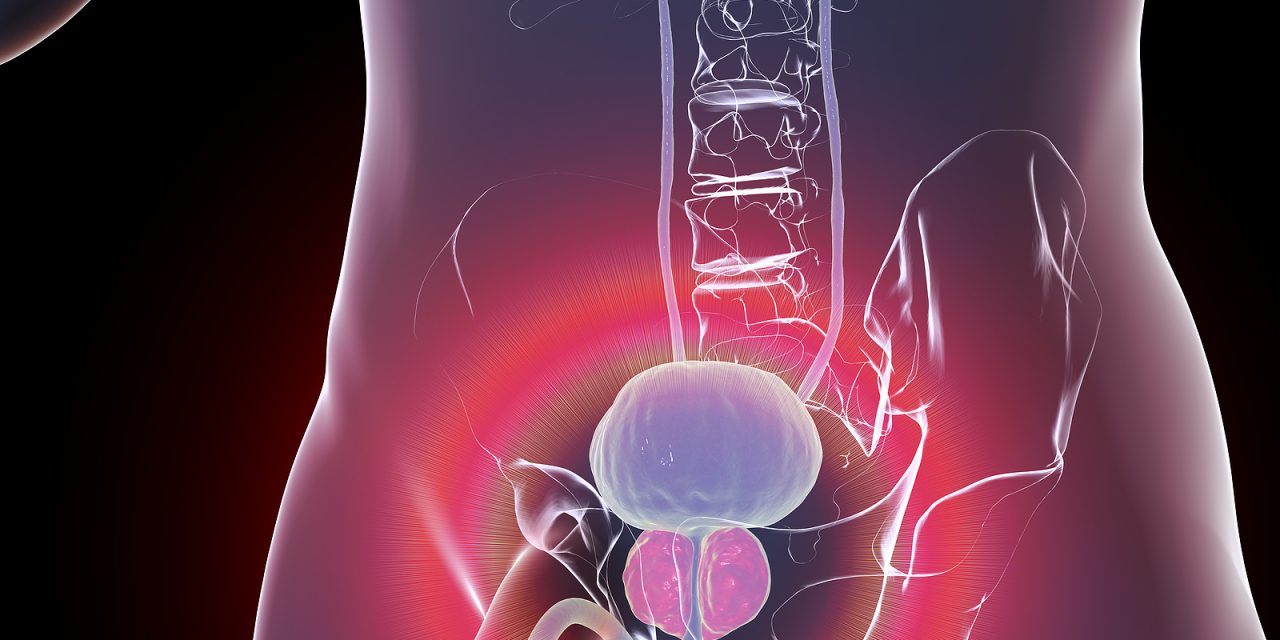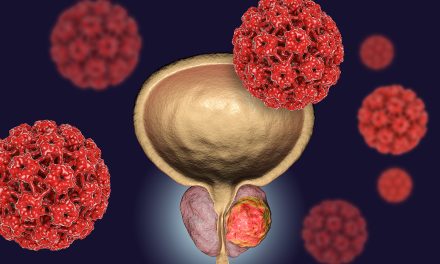An enlarged prostate, medically known as benign prostatic hyperplasia (BPH), is a common condition affecting men as they age. The prostate is a walnut-sized gland that forms part of the male reproductive system and is located just below the bladder. It surrounds part of the urethra, the duct through which urine passes out of the body. As men get older, the cells of the prostate may begin to multiply, leading to an increase in the size of the gland. This enlargement can press against the urethra and interfere with normal urine flow. Factors contributing to this condition include hormonal changes associated with aging, as well as genetic predispositions.

Treatment for an enlarged prostate varies depending on the severity of the symptoms and can range from medication to surgical interventions. Medications include alpha-blockers and 5-alpha reductase inhibitors to manage symptoms and hormone levels. In more severe cases, surgical options may be considered, such as transurethral resection of the prostate (TURP) or minimally invasive procedures like laser therapy. Making lifestyle changes, such as reducing caffeine and alcohol intake, can also help in managing the symptoms of BPH.
Key Takeaways
- Benign prostatic hyperplasia is an age-related condition where the prostate gland enlarges.
- Symptoms include difficulty urinating and may affect quality of life.
- Treatment options range from medications to surgery, tailored to individual needs.
Understanding Prostate Enlargement
Prostate enlargement, known medically as benign prostatic hyperplasia (BPH), is a common condition that can affect urinary function in men as they age. This section will elucidate the anatomical aspects of the prostate gland, define BPH, discuss common causes of prostate enlargement, and explore how age relates to changes in prostate size.
Anatomy of the Prostate Gland
The prostate is a small gland located just below the bladder in men. It encircles the urethra, the tube through which urine exits the body. The prostate’s primary function is to produce seminal fluid, which is a component of semen.
What Is Benign Prostatic Hyperplasia?
Benign prostatic hyperplasia (BPH) is the noncancerous enlargement of the prostate gland. It is sometimes also referred to simply as an enlarged prostate. As the prostate expands, it can impinge on the urethra, leading to various urinary tract symptoms.
Common Causes of Prostate Enlargement
Prostate enlargement can be attributed to several factors. Hormonal changes that occur with age play a crucial role. Additionally, certain cell growth factors that are more active in older men can also contribute to prostate growth.
Age-Related Changes in Prostate Size
As men age, it is common for the prostate to increase in size, a condition that can affect up to 50% of men by the age of 60, and up to 90% by the age of 85. The gradual growth can result in symptoms such as difficulty initiating urine flow and increased frequency of urination, particularly at night.
Identifying Symptoms of Prostate Enlargement
The onset of prostate enlargement often brings a range of urinary symptoms that vary in severity, signaling issues such as Benign Prostatic Hyperplasia (BPH). Recognizing these symptoms is crucial for early diagnosis and effective treatment.
Urinary Tract Symptoms
People with prostate enlargement might experience multiple urinary tract symptoms. These often include:
- Increased urinary frequency: the need to urinate more often than usual, often at night (nocturia).
- Urgency: a sudden, compelling need to urinate.
- Dribbling: Leakage or dribbling of urine, typically at the end of urination.
- Weak urine stream: The urine flow is slowed and does not stream out as it once did.
These symptoms can suggest underlying issues such as urinary tract infections or bladder stones, which are also essential to identify and address.
Urinary Retention and Its Consequences
Urinary retention refers to the inability to empty the bladder during urination, which can have serious ramifications, including:
- Development of bladder stones.
- Potential for kidney problems due to the prolonged retention of urine.
- Increased risk of urinary tract infections due to the stasis of urine.
Urinary retention must be addressed promptly to avoid these complications.
Symptoms Specific to BPH
Benign Prostatic Hyperplasia, the non-cancerous enlargement of the prostate gland, presents symptoms that may include:
- Nocturia: Frequent urination during the night.
- A urinary stream that starts and stops (intermittency).
- The sensation that the bladder is not empty after urination.
These symptoms point expressly to BPH and should be evaluated by a healthcare professional for appropriate management of the condition.
Diagnostic Procedures

When diagnosing an enlarged prostate, doctors employ various procedures to assess the severity and cause of the condition. These procedures are crucial for tailoring effective treatment plans.
Physical Examination
A doctor typically begins with a physical examination to check for physical signs of prostate enlargement. This may involve a digital rectal exam (DRE), where the physician gently inserts a finger into the rectum to palpate the prostate and assess its size, shape, and consistency.
Urinary Flow Test
The urinary flow test measures the strength and amount of urine flow. The patient urinates into a receptacle, and the resulting data gives the doctor insight into the impact of the enlarged prostate on urine flow.
Post-Void Residual Volume Test
This test determines the amount of urine left in the bladder after urination. It involves the use of ultrasound technology or a catheter to measure the residual urine, which can reveal urinary retention due to an enlarged prostate.
Prostate-Specific Lab Tests
Lab tests, including the prostate-specific antigen (PSA) blood test, analyze substances in the blood that can indicate prostate issues. Elevated PSA levels can be a sign of an enlarged prostate or other prostate conditions.
Treatment Options for Enlarged Prostate
Various treatment options for an enlarged prostate, also known as benign prostatic hyperplasia (BPH), can significantly improve symptoms and quality of life. From lifestyle adjustments to advanced surgical procedures, each has its specific application suited to different severities of the condition.
Lifestyle Adjustments and Home Remedies
Individuals with mild BPH symptoms may find relief through lifestyle changes. These can include:
- Dietary adjustments: Reducing caffeine and alcohol can alleviate urinary symptoms.
- Timed urination: Following a fixed schedule can help manage urinary frequency.
Medications Available
Several medications have been approved for treating BPH:
- Alpha-blockers: Relax the bladder, neck muscles, and muscle fibers in the prostate, making urination easier.
- 5-alpha reductase inhibitors: Help shrink the prostate and reduce urinary symptoms.
Minimally Invasive Therapies
When medications aren’t enough, minimally invasive therapies can be considered:
- Transurethral microwave thermotherapy (TUMT): Uses microwave energy to shrink prostate tissue.
- Water vapor thermal therapy involves injecting steam into the prostate to remove excess tissue.
Surgical Treatments
For severe cases of BPH, surgery might be necessary:
- Transurethral resection of the prostate (TURP): A joint surgery where excess prostate tissue is removed.
- Laser surgery: Laser therapy, such as Holmium Laser Enucleation of the Prostate (HoLEP), offers a less invasive option with potentially fewer side effects.
Living with Prostate Enlargement
Prostate enlargement can significantly affect a man’s daily life, presenting challenges with urinary symptoms and sexual function. Attention to lifestyle measures and consultation with urologists may help men manage these conditions effectively.
Managing Urinary Symptoms Daily
Men with enlarged prostates often experience urinary symptoms such as increased urinary frequency, urgency, and urinary incontinence. Daily management of these symptoms includes the following strategies:
- Exercise: Regular physical activity can help reduce urinary symptoms and improve men’s health.
- Caffeine Intake: Limiting caffeine can help reduce urinary urgency, as stimulants can exacerbate symptoms.
- Bladder Training: Scheduled voiding and pelvic floor exercises aid in strengthening muscles and controlling urinary incontinence.
Men might also find it beneficial to avoid drinking fluids before bedtime to lessen nocturia—waking at night to urinate.
Sexual Health and Function
- Consult with a urologist specializing in men’s health to discuss medication or procedures to alleviate these symptoms.
- Understanding that specific treatments can help with prostate enlargement and may also improve sexual function.
Proactive management and lifestyle adjustments are vital to living with prostate enlargement while maintaining quality of life and sexual health.
Potential Complications and Risks

Managing benign prostatic hyperplasia (BPH) is critical to prevent complications related to the condition and the risks associated with treatment procedures. Understanding the potential issues can aid in making informed decisions about prostate health.
Risks of Untreated BPH
If BPH remains untreated, one may experience a range of complications, primarily affecting the urinary tract. Complications include:
- Acute urinary retention (AUR): Sudden inability to urinate, often requiring the placement of a catheter to empty the bladder.
- Chronic urinary retention: Long-term inability to empty the bladder, which can lead to bladder stones, bladder damage, and kidney damage.
- Urinary tract infections (UTIs): The incomplete emptying of the bladder can be a breeding ground for bacteria, increasing the risk of UTIs.
- Blood in the urine (hematuria): Persistent or recurrent hematuria can result from an enlarged prostate exerting pressure on the bladder, neck, and urinary tract.
Complications from Treatment Procedures
Various treatments for BPH carry their risks and potential complications, which may include:
- Surgical interventions: Procedures to reduce the size of the prostate, such as transurethral resection of the prostate (TURP), can lead to short-term issues like bleeding or infection. There’s also a risk of cuts or damage to the surrounding tissues.
- Medications: Some drugs used to treat BPH may have side effects, such as changes in blood pressure or sexual function.
Recognizing these complications and risks allows for a proactive approach to managing BPH and mitigating its impact on quality of life.
Choosing a Healthcare Provider

Selecting the right healthcare provider is critical for the effective management and treatment of an enlarged prostate. The process involves understanding when to seek medical attention and what to anticipate during the consultation, with a focus on consulting specialists, such as urologists, who possess expertise in this area.
When to Consult a Doctor
One should consult a doctor if symptoms suggestive of an enlarged prostate, such as difficulty in urination or a frequent need to urinate, especially at night, are observed. It’s imperative to seek a healthcare provider with experience in treating benign prostatic hyperplasia (BPH). Facilities like the Mayo Clinic provide access to urologists proficient in diagnosing and treating this condition.
What to Expect During Your Visit
The healthcare provider will conduct a thorough assessment during the visit, typically starting with a detailed medical history followed by a physical examination. They may perform a digital rectal exam to evaluate the size and condition of the prostate. One should expect to discuss all symptoms and undergo urine tests, crucial for a comprehensive diagnosis and tailored treatment plan.
Frequently Asked Questions

This section explains the underlying reasons for prostate enlargement, effective treatments, the latest medical breakthroughs, the impact on sexual health, natural remedies, and typical urologist interventions.
What are the primary causes of prostate enlargement?
The enlargement of the prostate, often referred to as benign prostatic hyperplasia (BPH), primarily occurs due to aging and hormonal changes. Factors such as changes in the balance of sex hormones, as men grow older, contribute to prostate growth.
How can an enlarged prostate be treated effectively?
Treatment options for an enlarged prostate range from medications to minimally invasive therapies and surgery. The choice of treatment depends on the severity of symptoms, the size of the prostate, the patient’s overall health, and their preferences.
What are the newest medical advancements for treating an enlarged prostate?
Recent medical advancements include procedures such as prostate artery embolization, which reduces blood flow to the prostate, and laser therapies that remove excess tissue while minimizing side effects.
Can an enlarged prostate influence the sexual health of men, and how?
What natural remedies are recommended for managing symptoms of an enlarged prostate?
Several natural remedies are suggested for managing BPH symptoms, including saw palmetto, beta-sitosterol, and pygeum. However, patients should consult a healthcare provider before starting any natural remedy, as efficacy and safety vary.
What actions will a urologist likely take to address prostate gland enlargement?
A urologist will typically conduct a thorough assessment, including a PSA blood test and possibly an ultrasound. They will then discuss treatment options ranging from watchful waiting to surgical intervention, depending on the patient’s circumstances.














